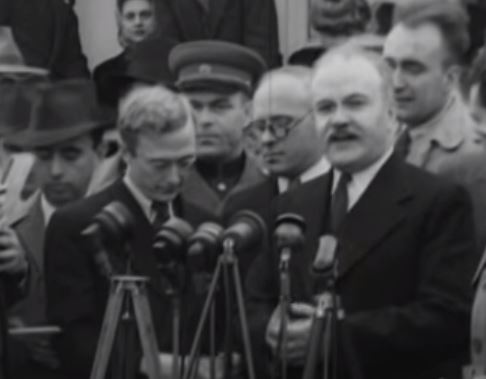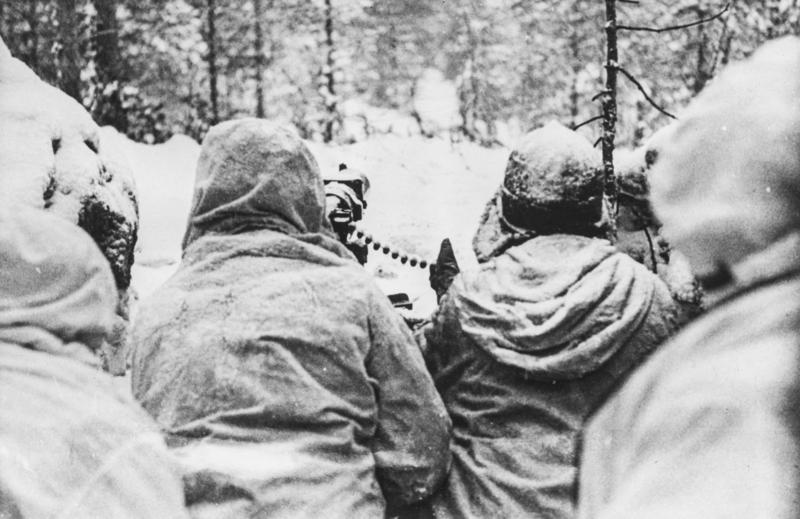
In the context of the aggression launched by the Russian Federation against Ukraine on February 24, one of the loudest voices of Kremlin propaganda is Russian Foreign Minister Sergey Lavrov. Although his belligerent statements often cause delight in the world media, in reality, the actions of the Russian foreign minister are extremely dangerous.
In fact, this is not the first time that in Russia the Minister of Foreign Affairs obediently acts before the absurd orders of the leaders. So, we have the example of his predecessor in the same position, Vyacheslav Molotov.
Even then, his statements about the state of well-being in the Soviet paradise were greeted with smiles by international public opinion.
It was the same Molotov who signed on behalf of the USSR the infamous Soviet-German Non-Aggression Pact on August 23, 1939, also known as the Molotov-Ribbentrop Pact, with such dire consequences for Romania as we would see in the following Summer of 1940.
Who was Vyacheslav Molotov, Stalin’s Minister of Foreign Affairs
Real name Vyacheslav Mikhailovich Scriabin, he actually did not have a “healthy background”, from the point of view of communist ideology, being the nephew of the composer Alexander Scriabin, therefore an intellectual.
A native of present-day Kirov, he became fascinated with communist ideas in his youth, when he took the surname Molotov, derived from the Russian term “hammer”.
He was close to Stalin from the beginning, and the dictator later rewarded him when in 1930 he appointed him chairman of the Council of People’s Commissars, which was equivalent to the position of prime minister.

Vyacheslav Molotov (youtube capture/Pathe)
It is worth noting that Molotov was involved in large-scale collectivization, and it is known that he used violent repression without any hesitation in trying to convince the peasants to give up their land.
The zeal he showed in the performance of party duties, good administrative skills, but, above all, his loyalty to Stalin, made Molotov not fall out of favor with the dictator, like all his other employees.
After the signing of the Munich Agreement in 1938, in which England and France gave Germany a free hand to annex Czechoslovakia, Stalin realized the danger posed by Nazi Germany.
Knowing at the same time the economic, but especially the military instability of the USSR, the latter due to the Great Purge, which he carried out in the past years in the army, he authorizes a rapprochement with Germany in order to buy time. This rapprochement was realized through the signing of the German-Soviet non-aggression pact in the same 1939.
The then Minister of Foreign Affairs of the USSR, Maxim Litvinov, was a Jew by origin, and therefore, fearing that the Germans would not want to negotiate with him, he was replaced by Molotov.
Thus, on August 23, 1939, Molotov signed the German-Soviet non-aggression pact on behalf of the USSR, the additional secret protocol of which No. 11.5 looked directly at Romania. The spheres of influence between the two dictators, Hitler and Stalin, were outlined.
While serving as Soviet foreign minister, Molotov also led the negotiations with Finland that preceded the Winter War. The Soviets wanted to occupy the Karelian Isthmus, to create a buffer zone around Leningrad. Obviously, the demands of the Russians were unacceptable to the Finns, so the USSR would invade the Scandinavian country.
The balance of power was disproportionate, but the weather conditions, the geography of the place, the poor training of the Red Army, and last but not least the heroism and efficiency of the small Finnish army made Pyrus victorious. The Soviets managed to impose strict peace conditions on Finland, but the losses in people and equipment were terrible during the three months of the war.

Finland 1939 – Mannerheim Line Photo: Text & Bilder / SVT / AFP / Profimedia
The same rhetoric: “We’re not capturing anyone” / “The Soviets will soon be eating ice cream in Helsinki”
The Soviet rhetoric at the time was the same as Lavrov uses today. They did not invade a peaceful country, but wanted to liberate Finnish peasants and workers from a government led by fascist elements who were oppressing them.
Molotov will make a fool of international public opinion when he declares at the beginning of the campaign that “the Soviets will soon be eating ice cream in Helsinki.”
This never happened, the Red Army, as I said, suffered huge losses.
Finnish soldiers used the name of the Soviet foreign minister to ironically call the flammable mixture used to stop the advance of tanks the Molotov cocktail.
After the death of his patron Stalin, Molotov’s career went into an inexorable process of decline, culminating in his expulsion from the CPSU in 1961. In addition, he was one of those who opposed the de-Stalinization policy imposed by Nikita Khrushchev.
Sergey Lavrov and his resemblance to Molotov
Unlike Molotov, who was a convinced Stalinist with a modest intellectual level, the current Minister of Foreign Affairs of Russia, Sergei Lavrov, is a career diplomat, an educated person, fluent in English, French and Sinhalese. Before becoming the Minister of Foreign Affairs, he was the permanent representative of Russia at the UN until 2004.
His speeches in the press due to anti-Western statements are notorious.
At the same time, starting from February 24, Lavrov will take over Vladimir Putin’s speech regarding the denazification of Ukraine and Russia’s mission to protect ethnic Russians in Donbass and Luhansk region, the analogy with Molotov’s statements regarding the invasion of Finland in 1939 is obvious. .
He seems to be convinced of the “great mission of Orthodox Russia” to become the protector of all Slavic peoples.
However, personal actions speak otherwise: Lavrov sends his only daughter Kateryna to study in the “decadent West”, she studies at Columbia University in the USA.
There is no doubt that at the moment it looks like the perfect diplomatic and demagogic tool for the aggressive policy pursued by Vladimir Putin.
Literature:
– Hryhor Hafenku, The Last Days of Europe
– Simon Sebag Montefiore, Stalin: The Trial of the Red Tsar
– Felix Chuev, Conversations with Molotov
– Derek Watson, Molotov: A Biography
Read other articles by Andrii Stan:
- Finn, who enlisted in three armies to fight against one enemy. How Laurie Torney became the subject of books and films
- “Not a step back”: the famous Stalin’s order 227 and blockade special forces
- Battle of Wizna or “Polish Thermopylae”
- The story of Andriy Vlasov, Stalin’s successful general who defected to the Germans: traitor or anti-communist?
- Who was Stepan Bandera: a hero for Ukraine, a terrorist for Russia/ Putin mentioned in his speech on Victory Day
- How war propaganda works: from the genocide in Rwanda to the Russian invasion of Ukraine
- Lend-Lease or how the USA helped Russia not to disappear
- The Ukrainian genocide that Russia would like to forget. The behavior of Russians then and now
- From Katyn to Buchi, or how Russian propaganda tries to change history
- The Battle of Turtukaia is one of the most shameful defeats in the history of the Romanian army
- The history of two Chechen wars: Russia “wanted” and then “quick and clean” intervention
- Why the blitzkrieg of the Russians in Ukraine failed
Will the Ukrainian army be able to resist the Russian invasion like the Finns in 1939?/ Similarities and differences
Source: Hot News RO
Robert is an experienced journalist who has been covering the automobile industry for over a decade. He has a deep understanding of the latest technologies and trends in the industry and is known for his thorough and in-depth reporting.